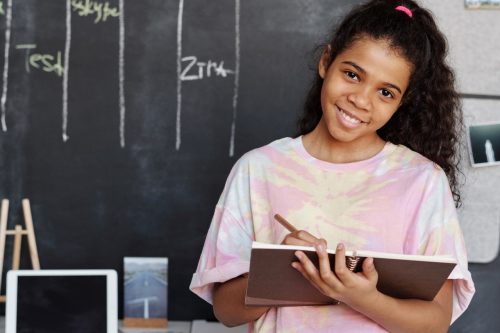In this article, we’ll explore the role of emotions in learning outcomes in children, emphasizing the role of emotions in learning outcomes and why creating a positive emotional environment is essential. We will also discuss strategies that can help parents, teachers, and caregivers support emotional well-being to enhance educational experiences and the role of emotions in learning outcomes.

Understanding the connection between emotions and learning is key to fostering not just smarter, but more resilient and motivated learners. Whether it’s the excitement of a new discovery or the frustration of a challenging concept, emotions can either fuel or hinder a child’s academic progress.
Recognizing the role of emotions in learning outcomes can transform educational practices and outcomes for children.
The role of emotions in learning outcomes is a pivotal factor influencing children’s academic journeys.
Emotions play a crucial yet often overlooked role in a child’s ability to learn and succeed academically. While cognitive abilities and effective teaching methods are important, a child’s emotional state can significantly impact their motivation, focus, and overall learning outcomes.
Understanding the role of emotions in learning outcomes provides insight into how children react and adapt to learning environments.
Incorporating the role of emotions in learning outcomes can lead to a more effective and inclusive educational approach.
When educators are aware of the role of emotions in learning outcomes, they can tailor their teaching strategies accordingly.
How Emotions Shape Children’s Learning
Recognizing the role of emotions in learning outcomes fosters better communication between educators and students.
Highlighting the role of emotions in learning outcomes can motivate students to take charge of their learning experiences.
Emotions play a vital role in how children absorb, retain, and apply knowledge. Research shows that emotional states influence cognitive processes like attention, memory, and problem-solving, making them integral to a child’s academic success.
The role of emotions in learning outcomes is crucial for developing a child’s self-efficacy and confidence.
Positive emotions, such as curiosity and excitement, create an engaging learning environment, while negative emotions, such as anxiety or frustration, can act as barriers to understanding.
To support effective learning, we must consider the role of emotions in learning outcomes and their impact on student performance.
By fostering emotional awareness and creating a supportive atmosphere, parents and educators can help children connect emotionally to their learning experiences, building both resilience and a love for discovery. Understanding this connection is key to unlocking every child’s potential.

In the past, emotions didn’t factor as a connection to learning, as curriculums seemed to forget we humans experience emotions as we go through our educational journey.
If we think about a subject we are learning, how often do we take the time to realize the emotions we feel as we remember that subject?
Exploring the role of emotions in learning outcomes enables students to develop coping strategies for various situations.
In the past, learning placed the focus more on gaining knowledge, rather than cultivating relationships with the idea of learning itself.
In recent times, research has shown that balancing emotions with learning meant that greater emphasis must be placed on the connections between emotions and learning.

We present to you an infographic that looks at the benefits of using social emotional learning in the classroom.
Click to view this and other selections of digital products
How Emotions Connect to Children Learning: They Can Regulate Learning With Journals
This blog contains shareasale affiliate links to highlighted websites and/or resources. By clicking on the link and making a purchase we may earn a small commission at no extra cost to you. Click here for full disclosure.
Journals may be a good resource for regulating student emotions. Consider visiting promptly journals to view their wide selection of journals for every situation! Click here to view and choose from among their wide variety of journal types.
Highlighting the role of emotions in learning outcomes can aid in building stronger relationships among peers.
Understanding the role of emotions in learning outcomes allows educators to create more meaningful learning experiences.
The role of emotions in learning outcomes is essential for fostering empathy and collaboration in classrooms.
Regulating Emotions with Book Learning
Students need to grasp the role of emotions in learning outcomes to navigate their educational paths effectively.
To enhance learning, students must recognize the role of emotions in learning outcomes and their personal experiences.
Through understanding the role of emotions in learning outcomes, students can better manage their academic stress.
The role of emotions in learning outcomes cannot be understated when discussing effective teaching methodologies.
In highlighting the balance between emotions and learning, we will focus on middle school years and above. Students in primary school are encouraged to focus on their emotions.
Why do emotions play less of a role as students get older?

Students in middle school and older may overlook the connections emotions play when it comes to learning because of societal expectations.
As students approach their middle school years, they generally become more aware of how others percieve them, and so they may worry that signs of negative emotions may signal weakness.
However, with being allowed to connect to their emotions, students may begin to see how their emotions stand in their way of learning.
By acknowledging the role of emotions in learning outcomes, teachers can foster a more inclusive educational experience.
To maximize student potential, we must appreciate the role of emotions in learning outcomes throughout education.
Understanding the role of emotions in learning outcomes helps in developing effective feedback mechanisms.
When teachers explain and demonstrate to students how emotions may help or hinder their learning, students may begin to self-regulate their emotions as they learn.
When students begin to connect to their emotions, they may either find ways to overcome anxieties attached to learning, or may decide learning is not for them.
How Emotions Connect to Children Learning: Overcoming Ones that Stand Against Learning
Additionally, the role of emotions in learning outcomes influences how children interact with their peers and educators.
Once students recognize negative emotions that may be standing in their way, they can begin to work towards overcoming these emotions.
Often times students can begin to form negative emotions towards what they are learning for varying reasons.

Recognizing the role of emotions in learning outcomes informs teacher training and professional development.
To address diverse learner needs, understanding the role of emotions in learning outcomes is crucial.
Ultimately, recognizing the role of emotions in learning outcomes leads to a more holistic approach to education.
For example they may find what they are learning to be:
- too hard
- useless
- boring
Whatever the reasons, students should be made to understand that there are beneficial skills attached to learning a subject.
Skills attached to learning include: problem solving, and time management skills.
The Role of Emotions in Learning Outcomes in Children and the Math Classroom
Math is perhaps the subject that is most closely tied to negative emotions students experience with their learning.
Often this is due to either the subject concepts being too hard, or deemed useless by the students.

These negative emotions may also lead students to develop anxieties when it comes to learning math, or any subjects related to math.
In helping to overcome negative emotions tied to math learning, students should be shown how concepts in math are really meant to enhance their problem solving skills.
Teachers who understand the role of emotions in learning outcomes can create engaging and supportive classroom environments.
Additionally, the role of emotions in learning outcomes is vital for effective classroom management techniques.

How students approach solving a problem could all they really need to understand when it comes to math if they can’t bring themselves to show positive emotions when it comes to learning math.
Regulating Emotions in the Online Classroom
Learning in the online platform worked well for those who chose to learn this way.
But when the pandemic of 2020 caused classes around the world to learn online, anxieties and negative emotions were felt by both students and teachers.

Negative emotions tied to learning online were also caused by various factors including;
- too hard to focus
- too boring
- the fear of technology
- the unfamiliarity of technology
- socioeconomic status
These factors directly impacted on students which resulted in what can be considered as learning loss among many students.
Again, in working to overcome negative emotions, students should be given ways to engage with activies online so they can take back control from the technology and benefit their other skills such as organization, and time management.
Accepting Emotions For What They Are
Not every student thrives in the traditional classroom and this is something that should be accepted rather than forced to change.
Often times, when it comes to the genders, boys tend to have a harder time regulating their emotions when it comes to learning in their middle years.

In recognizing the differences genders bring to the classroom, teachers can use these differences in ways that may benefit the different ways boys and girls learn.
In accepting emotions for what they are in the classroom, teachers can work with students to make personalized goals for their academic success.
These goals may be to understand the basics or to learn in non-traditional or differentiated ways.
Related Topics
Connect to our other pages as you navigate through our website. Explore what these pages have to offer you and you will be glad you did!
- ChatGPT and The Future of Homeschool Classrooms
- Six Summer Time Activities At Home Kids Will Love
- 5 Life Skills Needed for Homeschool Learning
- 5 Educational Strategies to Support Homeschooling Activities
- 5 Benefits Educational Videos Bring to Homeschooling
- 7 Ways to Build Recipes for Learning
Join Us Today!

Final Thoughts…
If emotions connected to learning are overlooked, children may never come to realize why they never enjoyed their time in school.
Children who may seem like they don’t belong in the traditional classroom, may actually thrive outside the classroom where they are encouraged to follow their goals and passions in their own way.
Embracing positive emotions we feel when learning brings our success to new highs.

Not dealing with negative emotions we feel when learning brings our desire for success to new lows.
So hopefully, after reading this article you agree with me as to just how important emotions are when it comes to learning.
Share Your Thoughts!
We would like to hear from you! Let us know your thoughts in the comments below on how emotions connect to student learning in the classroom.




